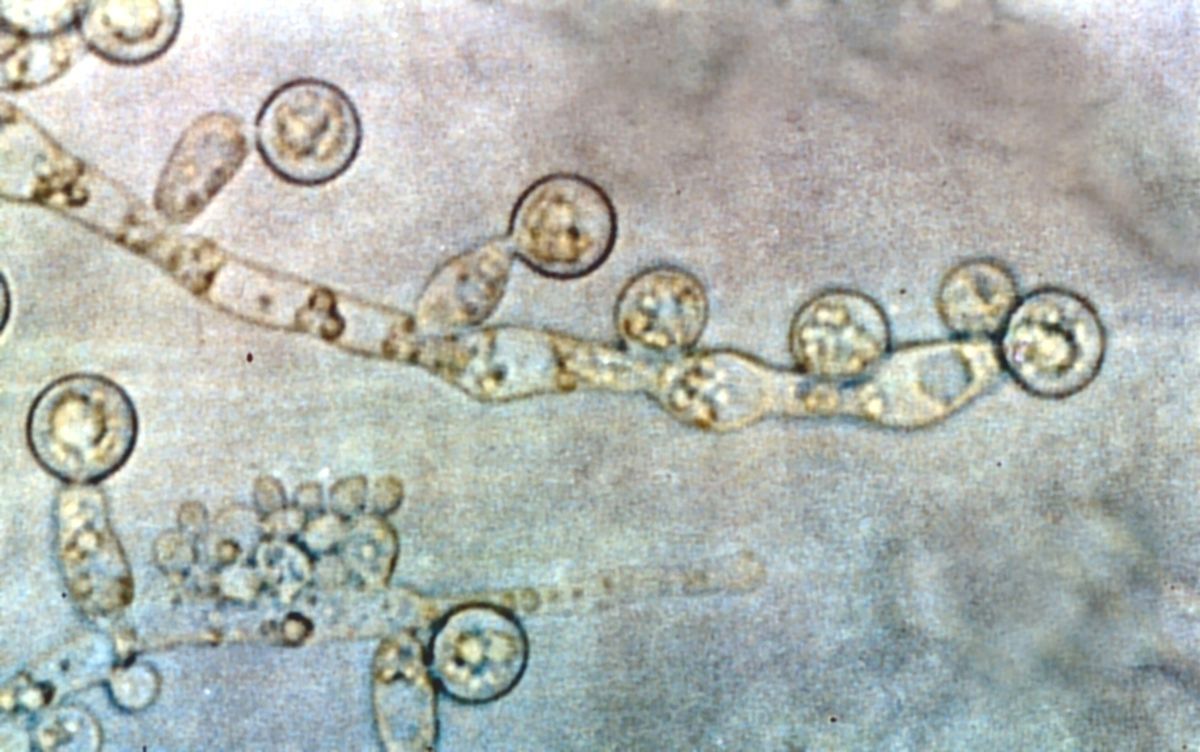
Compound for Treating Fungal Infections
Nickel xanthines complexes as selective agents for Candida sp. infection treatment
BACKGROUND
Invasive fungal diseases (IFDs) are a serious public health threat, affecting more than 2 million people worldwide. The increasing incidence of IFDs is due to a number of factors, including the rise of antibiotic resistance, the increasing use of immunosuppressive drugs, and the aging population.
There is a critical need for new antifungal drugs to treat IFDs. However, the development of new antifungal drugs is challenging due to the complex nature of fungal cells and the high cost of drug development.
We developed the synthesis of a new class of nickel N‐heterocyclic carbene complexes with antifungal activity. These complexes have shown promising antifungal activity against a variety of Candida species, including Candida albicans, which is the most common cause of IFDs.
This research provides a promising new approach to the development of new antifungal drugs. The commercial collaboration opportunity would involve further development and clinical testing of these compounds. This would have the potential to make a significant impact on the treatment of IFDs.
TECHNOLOGY OVERVIEW
We have synthesized five compounds composed of a metallocene based on nickel and N-heterocyclic carbenes based on xanthinium salts, which are active against Candida sp.. Among these, a nickel compound was found to be highly active, with a high potential for selective treatment of Candida glabrata infections.
These complexes are synthesized by reacting nickelocene with xanthinium salts. The resulting complexes have a variety of structural features that are thought to contribute to their antifungal activity.
Currently, the technological development is at TRL3 with the compound’s efficacy proven in vitro. Toxicity studies are on the way.
STAGE OF DEVELOPMENT
Technology Readiness Level (TRL): 3 – Laboratory Prototype.
BENEFITS & APPLICATIONS
The compounds can be synthesized in large scale and the precursors are available at low cost (nickelocene, theobromine, theophylline, caffeine, methyl iodide). Our solutions distinct characteristic relies on its different modus operandi, able to overcome resistance to azole drugs, making it simpler, faster and more cost-effective to synthesize.
Applications are as vast as:
- The pharmaceutical industry: This technology could be used to develop new antifungal drugs to treat IFDs.
- The agricultural industry: This technology could be used to develop new fungicides to control fungal diseases in plants.
- The environmental industry: This technology could be used to develop new bioremediation agents to clean up contaminated soil and water.
- The technology is better than other existing solutions because it is more effective and less toxic. The complexes described in the paper have shown promising antifungal activity against a variety of Candida species, including Candida albicans, which is the most common cause of IFDs. Additionally, the complexes are relatively non-toxic to human cells.
If this technology was successfully implemented, it could help to tackle the following problems:
- The increasing incidence of IFDs: The technology could be used to develop new antifungal drugs that are more effective and less toxic than existing drugs. This could help to reduce the incidence of IFDs and improve the lives of millions of people.
- The high cost of drug development: The technology is relatively simple and inexpensive to synthesize, which could help to reduce the cost of drug development. This could make it more affordable for pharmaceutical companies to develop new antifungal drugs.
- The environmental impact of fungicides: The technology could be used to develop new fungicides that are more environmentally friendly than existing fungicides. This could help to protect the environment and reduce the risk of groundwater contamination.
INTELLECTUAL PROPERTY
- PCT/IB2023/053012 (Priority date: 29/03/2022).
OPPORTUNITY
- Available for exclusive and non-exclusive licensing
- Seeking co-development partners and/or Sponsored Research
FURTHER DETAILS
Gaspar-Cordeiro A, Amaral C, Pobre V, Antunes W, Petronilho A, Paixão P, Matos AP, Pimentel C. Copper Acts Synergistically With Fluconazole in Candida glabrata by Compromising Drug Efflux, Sterol Metabolism, and Zinc Homeostasis. Front Microbiol. 2022 Jun 14;13:920574. doi: 10.3389/fmicb.2022.920574. PMID: 35774458; PMCID: PMC9237516.
Francescato, G., Silva, S. M. d., Leitão, M. I. P. S., Gaspar-Cordeiro, A., Giannopoulos, N., Gomes, C. S. B., Pimentel, C., Petronilho, A., Nickel N-heterocyclic carbene complexes based on xanthines: Synthesis and antifungal activity on Candida sp. Appl Organomet Chem 2022, e6687. https://doi.org/10.1002/aoc.6687
NOVA Inventors
Ana Rita Petronilho
Catarina Pimentel
Sofia Marques Silva
Giulia Francescato
Maria Inês Leitão


